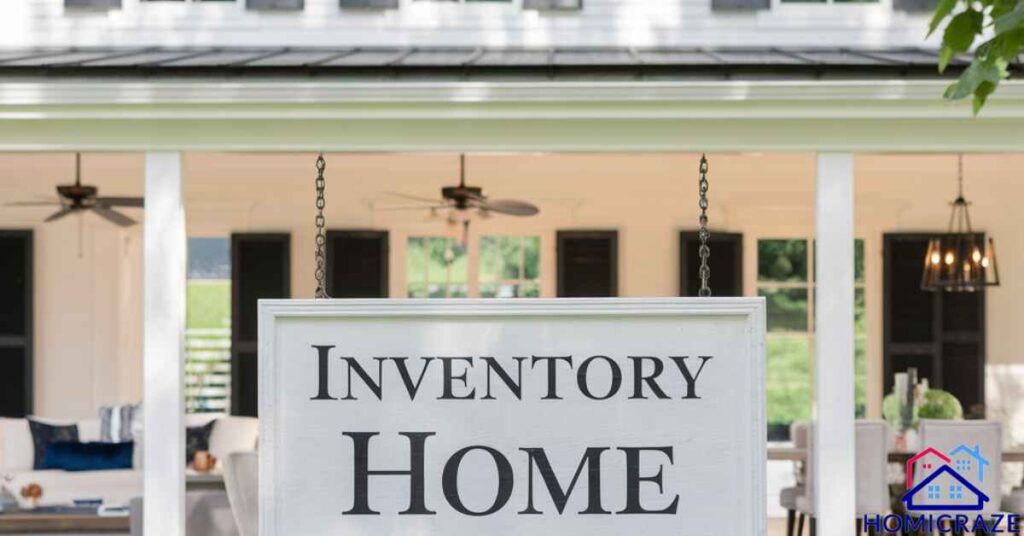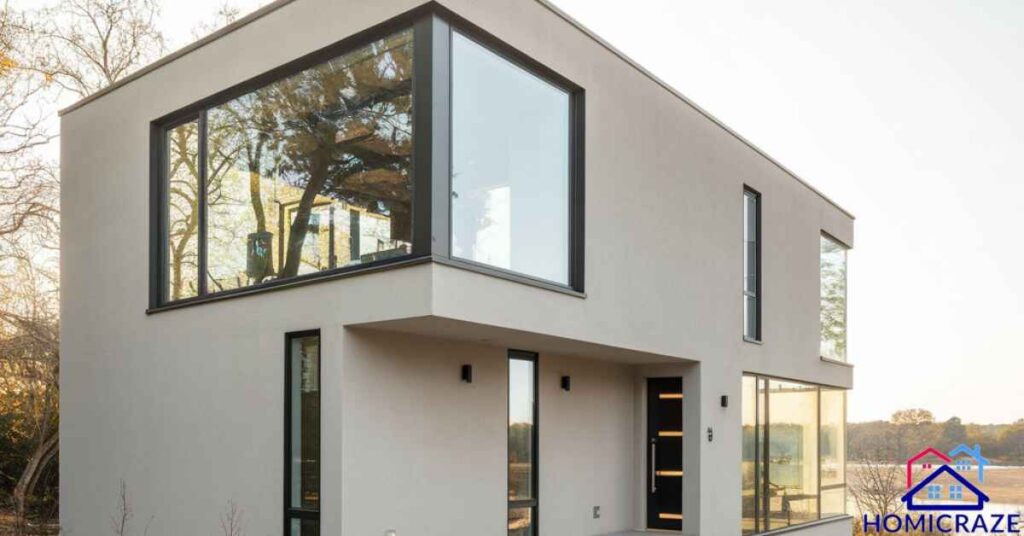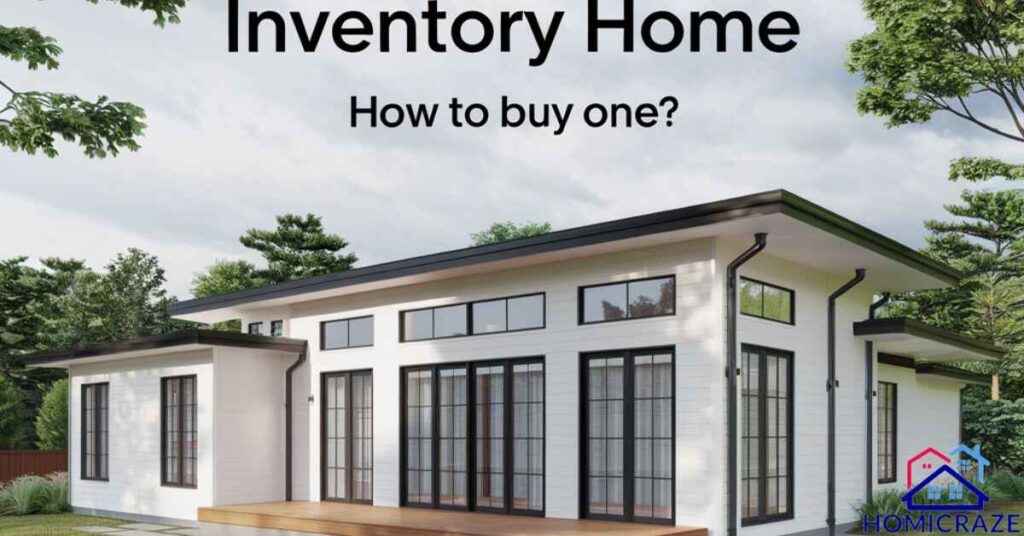Home buying can be a long, stressful process. Many buyers face months of waiting and uncertainty when building a new home. This delay can disrupt life plans and cause financial strain. Inventory homes offer a solution to these challenges. These are new, move-in ready houses built without a specific buyer in mind.
They provide a quicker path to homeownership without sacrificing the benefits of a new construction. This guide explains what inventory homes are and how to navigate the purchase process, helping you decide if this option is right for your needs.
Understanding Inventory Homes
Inventory homes are new houses that are move-in ready or nearly complete. Builders construct these homes before they have a buyer. This approach allows for faster move-in times. Inventory homes come in various styles and sizes.
They often include popular features and finishes. These homes provide a balance between new construction and immediate availability. They’re a good option for buyers who want a new home without a long wait.
What is a Spec Home?
A spec home is short for “speculative home.” It’s another term for an inventory home. Builders create these homes based on what they think will sell well. Spec homes are built without a specific buyer in mind.
They often include popular features and design choices. The builder takes on the risk of constructing the home before it’s sold. This approach allows buyers to see the finished product before making a purchase.
Differences Between Inventory Homes and Custom-Built Homes
Inventory homes and custom-built homes have key differences:
| Aspect | Inventory Homes | Custom-Built Homes |
| Design | Pre-determined | Buyer’s choice |
| Timeline | Quick move-in | Longer build time |
| Customization | Limited | Extensive |
| Cost | Often fixed | Can vary |
| Availability | Immediate or soon | Months away |
Inventory homes offer speed and certainty. Custom homes provide more personalization but take longer to complete.
The Process of Buying an Inventory Home

Buying an inventory home is similar to purchasing an existing home, but with some unique aspects. First, research available inventory homes in your area. Next, visit the homes you’re interested in. If you find one you like, make an offer.
The builder may be open to negotiation, especially if the home has been on the market for a while. Once your offer is accepted, proceed with financing, inspections, and closing. The process is often faster than with custom builds.
Researching Available Inventory Homes
To find inventory homes, start with online searches. Many builders list their available homes on their websites. Real estate websites often have sections for new construction. Local real estate agents can also help.
Visit model homes in communities you’re interested in. Builders often have information about inventory homes at these sites. Make a list of homes that meet your needs. Compare features, prices, and locations. This research helps you find the best options for your situation.
Working with a Real Estate Agent
A real estate agent can be valuable when buying an inventory home. They know the local market and can find homes that match your needs. Agents often have relationships with builders. This can help with negotiations and getting information.
They can explain the buying process and handle paperwork. An agent can also point out things you might miss when viewing homes. Their expertise can make the buying process smoother and less stressful.
Great Reasons to Buy an Inventory Home
Inventory homes offer several advantages. First, you can move in quickly. Second, you see exactly what you’re buying. Third, these homes often come with new appliances and warranties. Fourth, you avoid the stress of making endless decisions during construction. Finally, builders may offer incentives to sell these homes, potentially saving you money. These benefits make inventory homes attractive for many buyers.
Avoid Construction Delays and Stress
Buying an inventory home lets you skip the construction process. You don’t have to worry about weather delays or material shortages. There’s no need to make countless decisions about finishes and fixtures. The home is already built, so you know exactly when you can move in. This eliminates a lot of stress and uncertainty. You can focus on preparing for your move instead of managing a construction project.
Potential Cost Savings
Inventory homes can offer financial benefits. Builders often want to sell these homes quickly. They may offer incentives like closing cost assistance or upgrades. If a home has been on the market for a while, there might be room for price negotiation. You also avoid potential cost overruns that can happen during custom builds. These factors can make inventory homes a cost-effective option for many buyers.
Is an Inventory Home Right for You?
Deciding if an inventory home is right for you depends on several factors. Consider your timeline. Think about how much customization you want. Look at your budget. Assess the available inventory homes in your desired area. Think about your long-term plans. If you need a home quickly and find an inventory home that meets most of your needs, it could be a good fit.
Read This Blog: Average American Bedroom Size Guide
Assessing Your Timeline
Your moving timeline is crucial when considering an inventory home. If you need to move soon due to a job change or lease ending, an inventory home can be ideal. These homes are ready or nearly ready for occupancy. You can often move in within 30-60 days of purchase. This quick timeline can be a major advantage if you’re in a hurry to find a new home.
Evaluating Your Customization Needs
Inventory homes offer less customization than building from scratch. However, they often include popular features and finishes. Some builders allow minor changes before move-in. Consider what’s most important to you.
If you can live without choosing every detail, an inventory home could work well. It’s about balancing your desire for personalization with the convenience of a move-in ready home.
Find the Best Inventory Homes at Pecan Square
Pecan Square offers a variety of inventory homes. These homes combine quality construction with desirable features. The community provides amenities that enhance your lifestyle. Pecan Square’s inventory homes give you the chance to join a thriving neighborhood quickly. You can enjoy a new home without the wait of custom construction.
About Pecan Square Community
Pecan Square is a master-planned community in Texas. It offers a mix of home styles and sizes. The community features parks, trails, and gathering spaces. There’s a focus on connecting neighbors and fostering a sense of community. Pecan Square provides modern amenities while maintaining a small-town feel. It’s designed to offer a high quality of life for residents.
Also Read This Blog: Russian Sleep Experiment: Fact or Fiction?
Available Inventory Home Options
Pecan Square offers various inventory home options. These include different sizes, from cozy to spacious. Styles range from traditional to modern. Many homes feature open floor plans and energy-efficient designs. There are options for first-time buyers and those looking to upgrade. Each home is built with attention to quality and modern living needs.
Tips for Buying an Inventory Home

When buying an inventory home, do your research. Visit multiple homes to compare options. Check the builder’s reputation and the home’s warranty. Understand what’s included in the price. Consider the neighborhood and future development plans. Don’t rush the decision, but be prepared to act quickly if you find the right home. Working with a real estate agent can help you navigate the process.
Conduct Thorough Inspections
Always get a professional inspection when buying an inventory home. This helps identify any potential issues. Check the major systems like HVAC, plumbing, and electrical. Look for signs of settling or structural problems. Review the inspection report carefully. Use this information to make an informed decision about the purchase. It can also help with negotiations if issues are found.
Negotiate Effectively
When negotiating for an inventory home, know the market. Research recent sales of similar homes. Understand the builder’s motivation to sell. Be prepared to explain why your offer is fair. Consider asking for closing cost assistance or upgrades instead of just a lower price. Be respectful but firm in your negotiations. Remember, the goal is a fair deal for both parties.
The Future of Inventory Homes

The inventory home market is evolving. More builders are offering these homes to meet demand for quick move-ins. Technology is making the buying process easier. Virtual tours and online transactions are becoming common. Energy efficiency and smart home features are increasingly standard. The focus is on creating homes that are both move-in ready and future-proof.
Technological Advancements in Home Building
Technology is changing how inventory homes are built and sold. Smart home features are becoming standard. This includes automated lighting, thermostats, and security systems. Energy-efficient appliances and materials are more common. 3D printing and prefab construction might speed up the building process. Virtual reality tours allow buyers to explore homes remotely. These advancements make inventory homes more appealing and functional.
Frequently Asked Question
What is the difference between an inventory home and a spec home?
There is no significant difference. Both terms refer to homes built without a specific buyer in mind. Builders may use these terms interchangeably.
Can I make changes to an inventory home before moving in?
Minor changes may be possible, depending on the builder and the home’s completion stage. Major modifications are usually not allowed.
Are inventory homes cheaper than custom-built homes?
Inventory homes can be less expensive due to builder incentives and fixed costs. However, prices vary based on market conditions and specific homes.
How long does it typically take to close on an inventory home?
Closing on an inventory home usually takes 30-60 days. The process can be faster than with custom builds or existing homes.
Conclusion
Inventory homes offer a compelling option for homebuyers seeking a balance between new construction and quick move-in times. These pre-built homes provide the benefits of modern design and features without the extended wait associated with custom builds.
While they may offer less customization, inventory homes can be an excellent choice for those with time constraints or who prefer a streamlined buying process. By understanding the advantages, considering personal needs, and following key tips for inspection and negotiation, buyers can make informed decisions.
As the real estate market evolves, inventory homes are likely to remain an attractive option, offering a blend of convenience, quality, and potential cost savings for many homebuyers.







